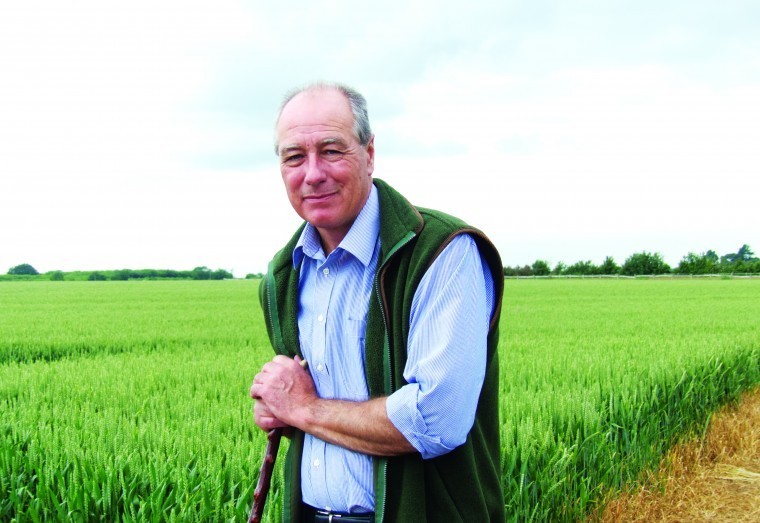The volume of rain has eased albeit still arriving frequently. And as the jet stream has moved north so has the rain to the extent that Cumbria has hit the flooding headlines again.
While I feel great sympathy for everyone effected there is no way that flood defences in Britain are going to be built to withstand the 325 millimetres of rain that fell in 24 hours and I am glad we have never had to face that intensity of rain in the South East. At a local level our farmers gauge for the severity of heavy winter rain is whether the River Beult at Pluckley floods and it has not done so thus far this winter. So while it is wet it is not exceptional.
The other side of the weather is the warm temperatures and that is not just exceptional but unprecedented in my experience. Aphid migration continuing into crops in December is not something one expects to see in agronomy reports and the strong winds have made applying further aphid sprays a challenge. We have persevered and most of our wheat crops have cover even if it is rather stretched and I expect to see some barley yellow dwarf virus effects in the spring as a result. I still cannot get that excited by the strong lush crops of wheat and oilseed rape as no doubt winter will arrive in January and some of the hardest winters have followed mild autumns. Prolonged freezing temperatures will soon trim these crops back.
Not long after writing last month’s article there were a few days of cold temperatures and we duly applied Kerb or Astro Kerb to all of the oilseed rape crops. Whether that was good timing is difficult to decide. There has been very little opportunity since but the persistency of grass control is likely to be compromised. I think that will have to be judged in the spring but we do have crop competition to help at the moment so perhaps I should be positive. The broad leaved weeds which are susceptible to Astro Kerb, are certainly dying back in a very satisfying way.
Winter beans are enjoying the warm temperatures with the early drilled crops looking too thick and advanced and the later ones that were ploughed emerging well and showing good plant populations. It will be rather galling if those thick early crops go on to lodge while the later ones that were ploughed in, almost in desperation, go on to produce a better standing crop and better yields. I have to admit that so far grass and broadleaved weed control has been very good whether drilled or ploughed as a means of establishment. And as they are going to become thick to very thick crops in the spring again crop competition should help.
One thing I keep hearing from grain merchants, accountants and consultants is how the good wheat yields have compensated for the poor prices as if that alone is sufficient to cheer us all up. I readily admit it has helped but with ecological focus areas ensuring most of us have some poor yielding legumes. Also with poor prices and oilseed markets in the doldrums and little better than average yields somewhere between 30 and 50% of the cropped acres on most arable farms will have lost serious money. Overall it is not good news for the bottom line and we are going through another of those periods in farming that have to be endured. The question is how long we are going to have to endure.
Forward pricing for wheat is full of gloom with trade talk of not just requiring one bad harvest somewhere in the world to turn it round but two which probably means two years at least. Although it does not help I am often consoled by the fact that the experts in the trade are no more able to predict when the upturn will come than a humble arable farmer. The flip side of our businesses is costs and there seems little abatement in that area. Nitrogen fertiliser has eased but whether that yet has much relation to cost of production I am still sceptical. Energy costs, oil and gas, have fallen incredibly worldwide and the cost of production of nitrogen fertiliser must have fallen more than the paltry few pounds reduction we have seen on farm. Agrochemicals seem to click upwards at a steady two to three percent per year. Labour costs, as George Osborne’s living wage progresses, will increase significantly and while in current circumstances that is unhelpful to arable farms, for horticultural businesses where 50 to 70% of production costs are labour based survival is going to be hugely challenging. Somehow I cannot see the supermarkets agreeing to significant produce price increases for suppliers not least as they are also struggling with the increased labour costs. Enduring seems to be the order of the day, if not year (or two).




